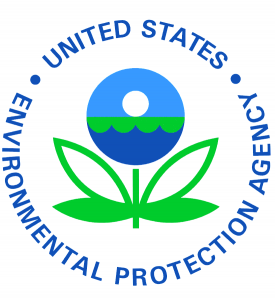 The federal courts have recently decided two significant Clean Water Act (CWA) cases: State of Georgia, et al. v. Wheeler, where the US District Court for the Southern District of Georgia held that the 2015 rulemaking proceeding of EPA and the U.S. Army Corps of Engineers redefining the term “Waters of the United States” in the CWA violated the Act as well as the Administrative Procedure Act; and the Ninth Circuit’s decision in Pacific Coast Federation of Fishermen’s Associations, et al. v. Glaser, where the appeals court ruled that the lower court erroneously interpreted a CWA NPDES permitting exception involving agricultural return flows.
The federal courts have recently decided two significant Clean Water Act (CWA) cases: State of Georgia, et al. v. Wheeler, where the US District Court for the Southern District of Georgia held that the 2015 rulemaking proceeding of EPA and the U.S. Army Corps of Engineers redefining the term “Waters of the United States” in the CWA violated the Act as well as the Administrative Procedure Act; and the Ninth Circuit’s decision in Pacific Coast Federation of Fishermen’s Associations, et al. v. Glaser, where the appeals court ruled that the lower court erroneously interpreted a CWA NPDES permitting exception involving agricultural return flows.
An Absence of Navigability: State of Georgia, et al. v. Wheeler
Decided on August 21, 2019, the district court, one of the few courts to grapple with the rule’s compliance with the CWA and the Administrative Procedure Act (APA), held that the agencies’ redefinition of the terms “Interstate Waters,” “Tributaries” and “Adjacent Waters” violated the CWA by reading “navigability” out of the new definitions, or by failing to adhere to the Supreme Court’s rulings in the 2005 case of Rapanos v. United States, in particular Justice Kennedy’s concurrence regarding the application of the “significant nexus” in case-by-case adjudications as to whether a particular body of water was covered by the Act. Moreover, some provisions of the rule conflicted with the APA because they were not a logical outgrowth of the rules proposed by the agencies in 2014, and on which they solicited comments, and other determinations were not supported by a reasonable explanation. In addition, without a clear statement from Congress that it supported the rule’s effect of increasing the nature and extent of enhanced federal jurisdiction over waters subject to the CWA, the court was loathe to approve the rule. Accordingly, the rule was remanded to the agencies for additional review consistent with this decision.
This decision is of particular importance as it may well be the first case to subject this new EPA rule—the linchpin of much of EPA’s regulation under the CWA—to extended review. (Other courts have only been asked to enjoin the rule, which involves a different type of review.)
A Point of Irrigation: Pacific Coast Federation of Fishermen’s Associations, et al. v. Glaser
The U.S. Court of Appeals for the Ninth Circuit decided the Pacific Coast Federation case in September 6, 2019. The court reversed the lower court’s dismissal of the petitioners’ complaint that the irrigation system largely operated by the federal government as part of the California Central Valley Project improperly allowed the discharge of pollutants into navigable waters without an NPDES permit. The lower court held that a permitting exception found in the CWA (see 33 USC Section 1342(l)(1)) which provides that no permit is required for “discharges composed entirely of return flows from irrigated agriculture” applies, and the petitioners had not satisfied their burden of proof. However, the appeals court ruled that the test is whether the return flows that are released by the irrigation system into navigable waters are entirely, not mostly, composed of agricultural-related return flows. Apparently it was conceded that some of the flows handled by the irrigation system were not agriculturally related. The matter was returned to the lower court to apply the correct interpretation of this permitting exception to the facts of this case. This is a very large and complex federal irrigation system, and lower court’s disposition of this case is likely to be important.
 Gravel2Gavel Construction & Real Estate Law Blog
Gravel2Gavel Construction & Real Estate Law Blog


